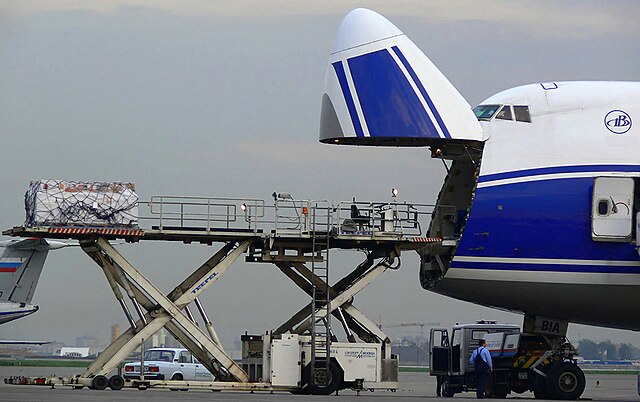The Boeing 747SP is a shortened version of the Boeing 747 wide-body airliner, designed for a longer range. It is the highest flying subsonic passenger airliner, with a service ceiling of 45,100 feet .
Boeing needed a smaller aircraft to compete with the McDonnell Douglas DC-10 and Lockheed L-1011 TriStar tri-jet wide-bodies, introduced in 1971/1972. Pan Am requested a 747-100 derivative to fly between New York and the Middle East, a request also shared by Iran Air, and the first order came from Pan Am in 1973.
Boeing 747SP
Iran Air 747SP from above, 47 ft (14 m) shorter than the 747, with four exit doors per side
The last 747SP, built in 1987 for Abu Dhabi Amiri Flight
The 747SP used as the NASA Stratospheric Observatory for Infrared Astronomy
The Boeing 747 is a long-range wide-body airliner designed and manufactured by Boeing Commercial Airplanes in the United States between 1968 and 2023.
After introducing the 707 in October 1958, Pan Am wanted a jet 2+1⁄2 times its size, to reduce its seat cost by 30%. In 1965, Joe Sutter left the 737 development program to design the 747. In April 1966, Pan Am ordered 25 Boeing 747-100 aircraft, and in late 1966, Pratt & Whitney agreed to develop the JT9D engine, a high-bypass turbofan. On September 30, 1968, the first 747 was rolled out of the custom-built Everett Plant, the world's largest building by volume. The 747's first flight took place on February 9, 1969, and the 747 was certified in December of that year. It entered service with Pan Am on January 22, 1970. The 747 was the first airplane called a "Jumbo Jet" as the first wide-body airliner.
Boeing 747
Cargo nose door open with cargo loader
An Iran Air 747-200, showing an early-production 747 cockpit with a flight engineer, located on the upper deck
The Pratt & Whitney JT9D high-bypass turbofan engine was developed for the 747.








